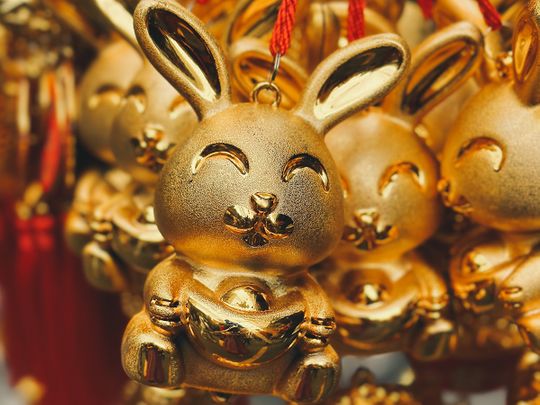
In the year 2015, many couples in China tried to avoid having babies. It was the Year of the Sheep.
Click start to play today’s Word Search, where you can explore the Chinese lunar-solar calendar.
Chinese tradition is rich with numerical superstition, according to a June 2014 report published by the US-based Smithsonian Institution. For instance, it’s common for people who run businesses in China to seek out telephone numbers that include an eight, since the number sounds similar to the phrase ‘becoming rich’. Similarly, four is the worst number, and is avoided at all costs – it sounds like the word for ‘death’.
Even important events, like births and weddings, are often decided only after consulting the Chinese calendar. Those born in 2015, the Year of the Sheep, were thought to be meek, prone to heartbreak, and unlucky in business – three good reasons to skip having babies that year. According to a January 2016 report by news agency Press Trust of India (PTI), around 16.55 million children were born in China in 2015, about 320,000 fewer than the previous year, despite relaxation in the country’s family planning policy in 2013.
Ironically, one of the most commonly held superstitions around the world is actually thought to be lucky in Chinese culture. Friday the 13th (thirteen is pronounced ‘shisan’) sounds like the word for ‘assured living’ in Cantonese, which is why it’s considered to be an auspicious day.
Although superstitions surround the vibrant Chinese calendar, it’s a vital tool of reference. The calendar based on precise astronomical observations of the longitude of the sun and the phases of the moon, with principles of modern science impacting how it works.
March 21, for instance, marks the first day of spring. In Chinese tradition, however, there are 24 solar terms that mark every 15 degrees on the sun’s ecliptic path. Every term is descriptive and lyrical. For instance, when life comes out of winter hibernation, the calendar marks the days as ‘jing zhe’ or ‘insects awake’. At the height of spring, the climate is ‘qing ming’ or ‘clear bright’, and when summer is fading, you may experience ‘chu su’ or ‘hidden heat’. When winter arrives again, the country prepares for ‘da han’ or the ‘big chill’, closing out the year’s cycle.
Each of these terms is divided even further, into three parts, and depicts events that are both biological and botanical. The spring equinox or ‘chun fen’, comprises moments when ‘dark birds arrive’ (which could be translated to swallows migrating north), ‘thunder sounds’ (or the beginning of spring storms) and ‘lightning begins’ (a term with dual meaning, which could indicate thunderstorms and the gradual lengthening of daylight).
While people living urban centres in the country may not find much use for the descriptive, detailed calendar, these terms have always been incredibly important for Chinese farmers, especially those in the Yanzi River Delta region, who depend on the weather to plan their sowing and harvesting schedules.
With both practical and cultural significance, the Chinese calendar, with its enigmatic terms, colourful myths and fables, still holds weight and relevance.
What do you think? Play today’s Word Search and tell us at games@gulfnews.com.









